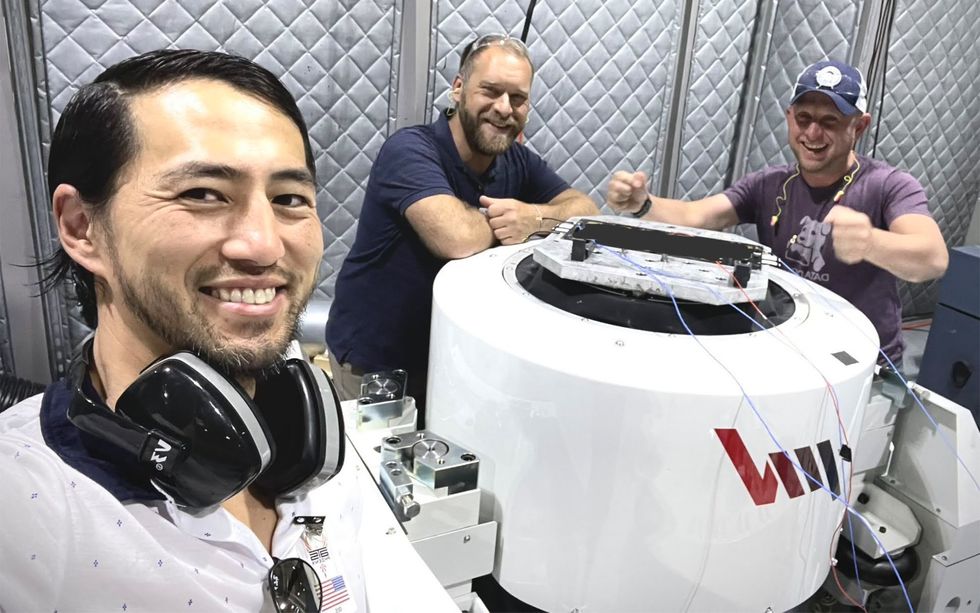Errors in Navigational Models Could Have an Easy Answer

Just as early mariners used simple compasses to chart courses across the sea, today’s ships, planes, satellites, and smartphones can rely on Earth’s magnetic field to find their bearings. The difference is that today’s rather more sophisticated compasses have the aid of complex models, like the commonly used World Magnetic Model (WMM), that try to capture the multifaceted processes that create Earth’s magnetosphere. A compass can rely on the WMM or similar models to convert a needle pointing to magnetic north to a heading with respect to true north. (The two norths differ by ever-changing angles.)
These models are not perfect: There are differences between the magnetosphere that they predict and the magnetosphere that satellites observe. Scientists have traditionally ascribed these differences to space currents that flow through the magnetic field high in Earth’s upper atmosphere. But new research complicates the picture, suggesting that the differences are the result of observational biases, incomplete models, or both.
For craft that require sensitive navigation, particularly around Earth’s poles, any of these complications pose a problem. And those problems stand to grow as polar ice melts around the North Pole, opening up potential new shipping routes.
Earth’s magnetic field is multifaceted and complex, but models like the WMM can project it out a few years at a time. The WMM’s current edition, released in December 2019, contains estimates of Earth’s magnetic field from the start of 2020 to the end of 2024. (The next version, covering 2025 through 2029, is scheduled for release in December of this year.)
“Compasses need to account for space currents already, but this adds more complication and sources of noise that have to be dealt with.” —Mark Moldwin, University of Michigan
These models do not always account for space currents, which are often pushed around by extraterrestrial forces like the solar wind. But if space currents are responsible for the discrepancies between models and observations, scientists could identify them by simply finding the differences, which they call “residuals.” Moreover, there would then be little reason for one of Earth’s hemispheres to display more residuals than the other—except that’s what existing models predict.
But the new study’s authors, space physicists Yining Shi and Mark Moldwin from the University of Michigan, had been among a number of researchers who had spotted an imbalance in residuals. More residuals seemed to emerge from the magnetic woodwork, so to speak, in the southern hemisphere than in the Northern Hemisphere. “We wanted to take a closer look at them,” Moldwin said.
Shi and Moldwin compared estimates between 2014 and 2020 from another Earth magnetic field model, IGRF-13, with observations from the European Space Agency’s Swarm mission, a trio of satellites that have continually measured Earth’s magnetic field since their 2014 launch.
When they focused on residuals over that time period, they did indeed find about 12 percent more major residuals in the Southern Hemisphere than in the Northern. All of these large residuals were found in the polar regions. Many were concentrated at latitudes of 70 degrees north and south, where scientists expect to find space currents.
But another spate of residuals were concentrated closer to Earth’s geographic poles, about 80 degrees north and south, where they have no obvious geophysical explanation. Moreover, the distributions of these poles differed—matching the fact that Earth’s geographic poles map to different magnetic coordinates.
This second peak in particular led the researchers to consider alternative explanations. It is possible, for instance, that IGRF-13 simply does not capture all of the factors driving Earth’s magnetosphere around the poles. But another cause could be the satellites themselves. Shi and Moldwin say that, because Swarm satellites reside in orbits that cross the poles, Earth’s northern and southern polar regions are overrepresented in their magnetic measurements.
“Compasses need to account for space currents already, but this adds more complication and sources of noise that have to be dealt with,” Moldwin said.
Now, Shi is examining these residuals more closely to pick apart the causes of the residuals—which ones have actual geophysical explanations and which are the result of statistical errors.
Shi and Moldwin published their work on 6 May in Journal of Geophysical Research: Space Physics.



 Hubble Network chief space officer John Kim (left) and two company engineers perform tests on the company’s signal-sensing satellite technology. Hubble Network
Hubble Network chief space officer John Kim (left) and two company engineers perform tests on the company’s signal-sensing satellite technology. Hubble Network